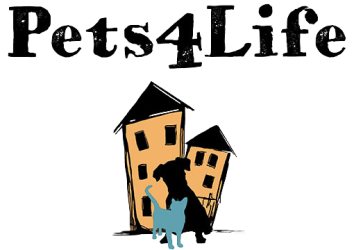On October 16th, Pets4Life Louisville hosted a Community Partner Conversation at the California Community Center — a gathering designed to listen, learn, and connect with people and organizations who care deeply about pets and families in Louisville’s 40210 neighborhood.
This event was part of our ongoing work supported through the PetSmart Charities Incubator Grant, which is helping us co-create new solutions for improving access to veterinary care in historically underserved neighborhoods. Over the past two years, we’ve conducted surveys, interviews, and multiple focus groups with residents in 40210. This Community Partner Conversation was an important next step: bringing together the people who serve this community every day so we can learn from their insights and collaborate more intentionally.
🌟 Who Was in the Room
We were honored to welcome 14 attendees representing a diverse mix of organizations and lived experiences. Leaders from the Kentucky Humane Society, Metro Animal Services, Metro Housing Authority, and several nonprofit organizations including My Dog Eats First and Spay Anyway, joined community members and Pets4Life Louisville team members.
Although participants came from different backgrounds, the atmosphere was warm, open, and unified. People listened to one another with respect, nodded in agreement, and often leaned in to show support. Even when the conversation touched on sensitive topics like racial barriers, stereotypes, and systemic inequities, the discussion remained thoughtful and authentic.
It was clear that everyone shared the same goal:
Make pet care more accessible, sustainable, and community-centered in Louisville’s West End.

What We Heard: Key Themes from the Conversation
1. Barriers to Veterinary Care Are Significant and Overlapping
Participants consistently highlighted the same core challenges faced by pet families in 40210 (and similar communities):
- Cost of veterinary care — especially emergency care
- Lack of transportation and no pet-friendly bus system
- Limited local options, especially since several clinics have closed
- Housing barriers — pet fees, ESA documentation, and restrictive landlord policies
These issues don’t exist in isolation; together, they create a cycle that can force families to delay care, rely on informal solutions, or face heartbreaking decisions.
2. Preventive Services Have Improved — But Emergency Care Is Still Out of Reach
Partners praised the progress made through local vaccination clinics, spay/neuter resources, and community pop-ups. But they emphasized that emergency and urgent care remain the biggest unmet need, leaving families with few — if any — affordable options when something goes wrong.
One participant shared that many pet owners simply “wait and hope the problem goes away” because urgent care is too expensive or too far away.
3. Transportation Remains a Major Barrier
Only a small number of residents in focus groups reported having access to a personal vehicle. Without pet-friendly public transit, families rely on:
- Walking
- Asking neighbors for rides
- Uber Pets (when they can afford it and if they have phone access)
Several partners noted that even reaching a “walk-in” clinic like the one in Shively can require hours of waiting, which is especially difficult for residents juggling jobs, childcare, medical needs, or mobility limitations.
4. Education and Clear Communication Are Essential
Participants emphasized that access isn’t just about affordability — it’s also about information:
- How do residents find out about clinics?
- How far in advance do they need to prepare?
- What services will be offered?
- How much will it cost?
Because many residents have unstable phone service, limited data, or low digital literacy, face-to-face communication remains the most effective outreach method. Flyers, door hangers, and trusted word-of-mouth networks play a crucial role.
5. Trust Comes From Showing Up
Our partners unanimously agreed that one of Pets4Life’s greatest strengths is our physical presence — being in neighborhoods, talking with families directly, and building relationships over time. This builds trust, helps us understand needs in real time, and ensures services feel accessible rather than intimidating.
6. Collaboration Is the Path Forward
The most inspiring part of the evening was the shared desire for deeper collaboration. Participants emphasized:
- The importance of cross-organization partnerships
- Combining human services with pet services
- Creating programs that are culturally informed and community-driven
- Working together to build long-term, sustainable solutions
Nearly every attendee expressed interest in staying connected and finding new ways to support one another’s work.
🚀 Where We Go From Here
The ideas shared during the Community Partner Conversation will directly shape Pets4Life’s future plans, which includes:
- A Virtual Petcare Hub for pet-related support
- Three neighborhood-based Petcare Hub Locations
- Ultra–low-cost veterinary services with advance notice so families can prepare
- A trust-based eligibility model
- Community-led workshops, pop-ups, and training events
But most importantly, this event reaffirmed that the future of this work must be co-created — with partners, community members, and organizations who understand the neighborhood’s strengths and challenges.
We are deeply grateful to everyone who joined us.
Your compassion, honesty, and commitment will help move us closer to a future where every pet — and every family — has access to the care they deserve.

